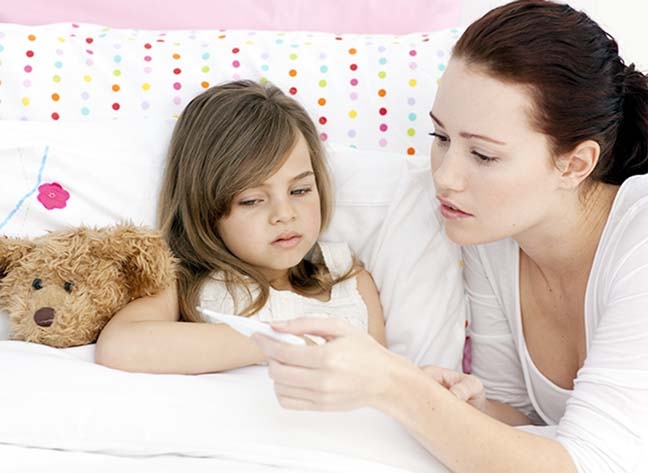
Dr. Abu Taher :
The febrile convulsion is a fit or seizure that occurs in children when they have a high fever. Febrile convulsion is not epilepsy and does not cause brain damage. This can happen in children aged six months to five years. The fit can last a few seconds or up to 15 minutes and is followed by drowsiness. Most fits last less than two to three minutes.
One in every 20 children will have one or more febrile convulsion. A febrile convulsion is not epilepsy and does not cause brain damage. Around 30 per cent of babies and children who have had one febrile convulsion will have another. There is no way to predict who will be affected or when this will happen.
o Symptoms of febrile convulsions
The symptoms include:
o Loss of consciousness (black out)
o Twitching or jerking of arms and legs
o Breathing difficulty
o Foaming at the mouth
o Going pale or bluish in skin colour
o Eye rolling, so only the whites of their eyes are visible
o Children may take 10 to 15 minutes to wake up properly afterwards. They may be irritable during this time and appear not to recognise object/person.
Reassurance for parents
The signs and symptoms of a febrile convulsion can be very frightening to parents.
Important things to remember include:
o Children suffer no pain or discomfort during a fit.
o A febrile convulsion is not epilepsy. No regular drugs are needed.
o A short-lived fit will not cause brain damage. Even a long fit almost never causes harm.
o Children who have had a febrile convulsion grow up healthy.
o If you have concerns or questions, contact your local doctor. In an emergency, take your child to the nearest hospital emergency department.
o Sometimes, if a child has had a prolonged fit, a rectal diazepam kit (used in the anus) is given to keep at home in case the child fits again. Discuss this with your doctor.
Sudden rise in body temperature
Febrile convulsions only happen when there is a sudden rise in body temperature. The fever is usually due to a viral illness or, sometimes, a bacterial infection. The growing brain of a child is more sensitive to fever than an adult brain. Febrile convulsions tend to run in families, although the reason for this is unknown.
Treatment for a fever
Fever is a normal response to infection and is usually harmless. If your child has a fever, suggestions include:
o Keep them cool by not overdressing them or having their room too hot.
o Give them plenty to drink. It is best to give small, frequent drinks of water.
o Give liquid paracetamol if your child has pain or is miserable. Check the label for how much to give and how often. Paracetamol does not protect against febrile convulsions.
First aid for febrile convulsions
* Try to stay calm and don’t panic.
o Make sure your child is safe by placing them on the floor. Remove any object that they could knock themselves against.
o Don’t force anything into your child’s mouth.
o Don’t shake or slap your child.
o Don’t restrain your child.
o Once the fit has stopped, place your child on their side with their face turned to the floor.
o Note the times that the fit started and stopped to tell the doctor.
o Have your child checked by your local doctor or nearest hospital emergency department as soon as possible after the fit stops.
o Call an ambulance if the fit lasts longer than five minutes, as medications may be needed to stop the fit.
Things to remember
A febrile convulsion is a fit or seizure that occurs in children when they have a high fever. febrile convulsion is not epilepsy and a short-lived fit will not cause brain damage – even a long fit almost never causes harm. Call an ambulance if the fit lasts longer than five minutes, as drugs may be needed to stop the fit.
(Dr Abu Taher is a Consultant Paediatrician, Samorita Hospital)
-Life Desk

